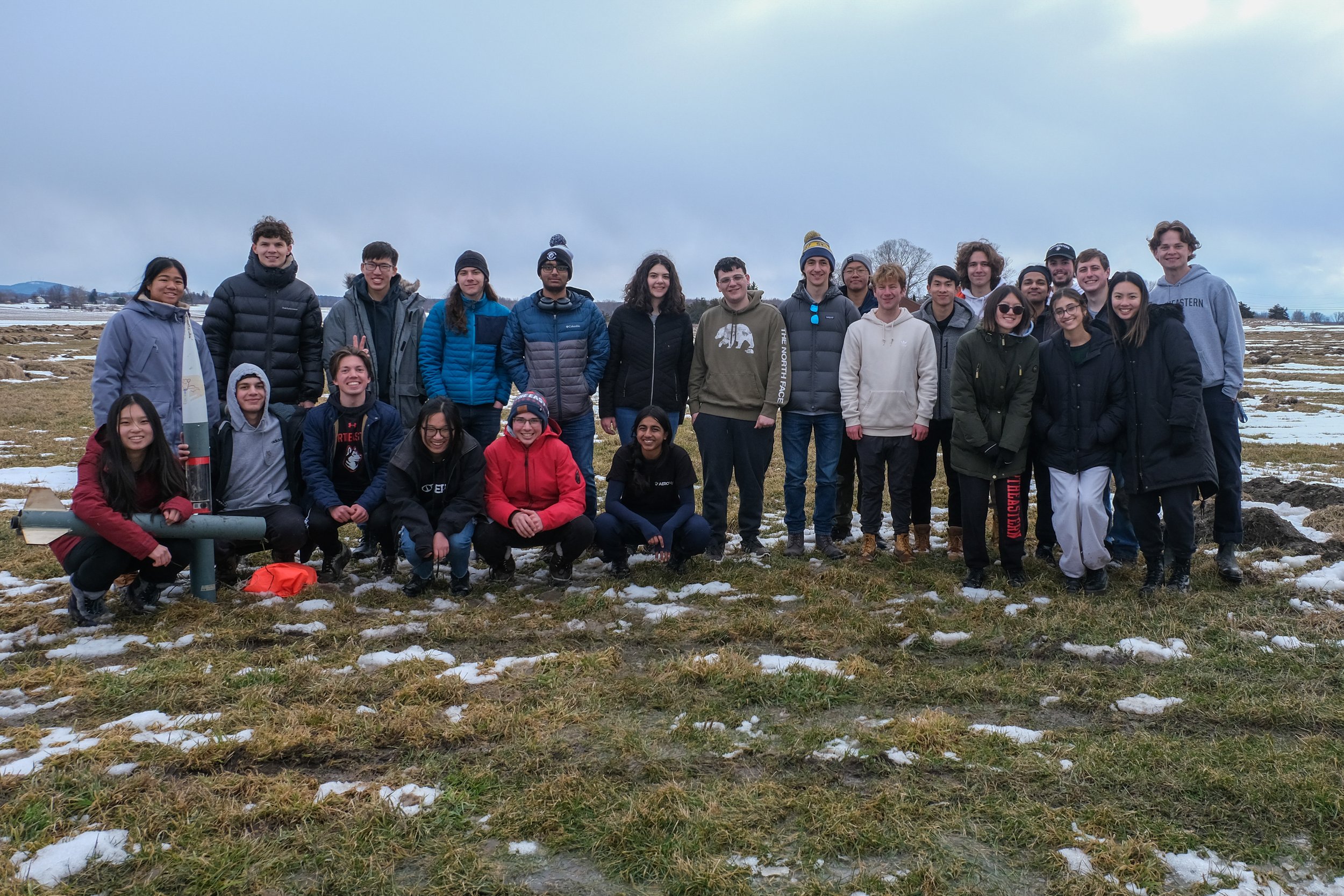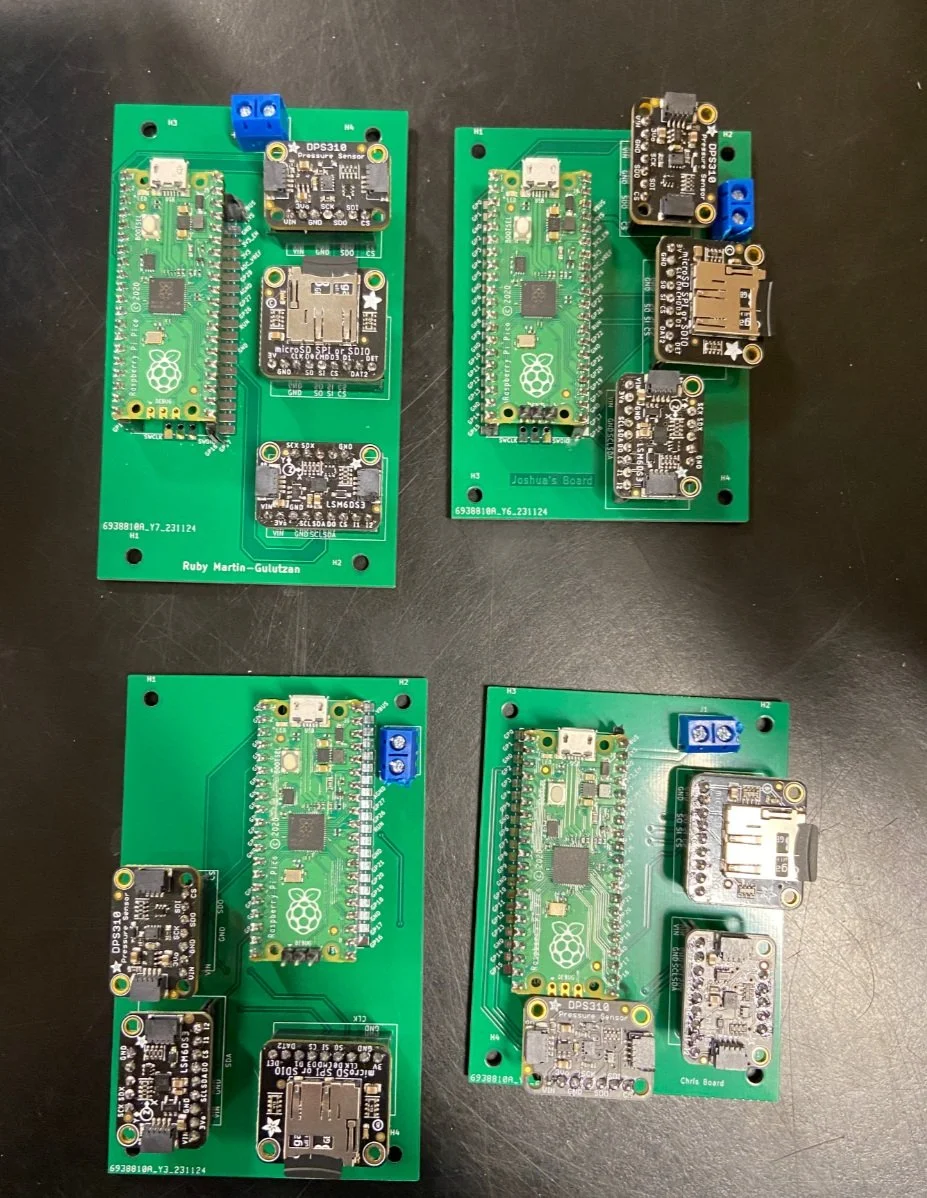
Introduction to Aerospace
Intro to Aerospace is a program designed specifically to introduce new members to high-power rocketry. Though structured like a class, don’t worry - we focus heavily on practical application. Groups of students are paired with mentors from the club, and work through a project together from start to finish. We offer several different tracks, each of which focuses on a different part of aerospace. No prior knowledge is expected - we mix theory with hands-on application to teach you everything you need to know!
Intro started in 2014 as a semester-long class of 20 students learning about airframes. Since then, the program has grown to accommodate over 70 students annually, with proportional growth in mentorship. In 2020, Intro expanded in scope to teach other aspects of rocketry beyond airframes. Extending to a year-long rather than semester-long program, it now incorporates several different tracks to take a deeper dive into student's’ areas of interest.
This year, we’re running 4 tracks: Intro to Airframe, Intro to Avionics, and Intro to Propulsion. Check out the descriptions below, and see what sounds interesting to you!
Intro to Airframe
The Intro to Airframe track focuses on skills required for the general design and construction of rockets. The airframe of a rocket is the structural skeleton, the outer protective skin that houses the motors, electronics, and payloads.
Intro to Airframe’s goal is to introduce students to basic rocket science, software packages commonly used to model and simulate rocket designs, and the general assembly process. Working in groups, students go through the entire rocket-building process, from whiteboard sketch to launch. They learn about all the major systems that make up a rocket, designing and building their group’s own rocket as they go. The experience culminates in a rocket launch mid-spring: students send their rockets soaring!
Intro to Avionics
The Intro to Avionics program aims to expose students with no prior experience to the hardware and software systems required to monitor flight. Topics covered include soldering, communication protocols, state machines, and embedded software development in Arduino.
Over the course of the fall and early spring semesters, students assemble and program their flight monitoring electronics. They start by connecting sensor breakout boards and a microcontroller on a breadboard to learn how to connect components in a circuit. We then cover embedded software development to get data from each of the sensors and log to an SD card. We then introduce KiCad, a PCB design software we use to transfer the breadboard circuits into a PCB we order and assemble. The program culminates with assembling and launching small poster tube rockets with the electronics inside to test them during a real rocket flight.
Intro to Propulsion
Intro to Propulsion aims to educate and engage students with the high-energy systems used to propel rockets, with a focus on liquid rocket engines. After some conceptual presentations to provide a high-level overview of the subject, members break into mentor-led groups that each develop their own project to be tested on a liquid rocket engine.
In 2022-2023, projects included designing and manufacturing an ablative nozzle and a regenerative nozzle which both increase engine runtime by reducing heat to the engine wall, and an injector (pictured) to atomize propellants prior to combustion. In the course of developing their projects, students gain experience in design for assembly/manufacturing, Solidworks, CNC machining, MATLAB, and thermofluidic calculations. Critically, we strive above all else to create a friendly, supportive, and learning-oriented community that members look forward to returning to each week.




